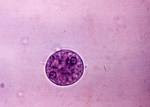MYCOLOGY

Mycology (from the Greek μύκης, meaning "fungus") is the branch of biology concerned with the study of fungi, including their genetic and biochemical properties, their taxonomy, and their use to humans as a source for tinder, medicinals (e.g., penicillin), food (e.g., beer, wine, cheese, edible mushrooms), entheogens, as well as their dangers, such as poisoning or infection. From mycology arose the field of phytopathology, the study of plant diseases, and the two disciplines remain closely related because the vast majority of plant pathogens are fungi. A biologist who studies mycology is called a mycologist. Historically , mycology was a branch of botany (fungi are evolutionarily more closely related to animals than to plants but this was not recognized until a few decades ago). Pioneer mycologists included Elias Magnus Fries, Christian Hendrik Persoon, Anton de Bary and Lewis David von Schweinitz. Today, the most comprehensively studied and understood fungi are the yea



